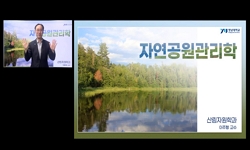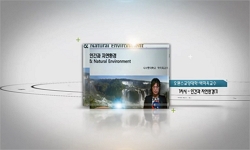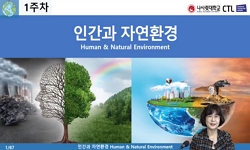Starting in 1960, Korean ceramics techniques developed rapidly as the Korean people's living patterns and values changed as Korean industries developed rapidly. However, the opportunity for the people to become closer to nature has been relatively red...
http://chineseinput.net/에서 pinyin(병음)방식으로 중국어를 변환할 수 있습니다.
변환된 중국어를 복사하여 사용하시면 됩니다.
- 中文 을 입력하시려면 zhongwen을 입력하시고 space를누르시면됩니다.
- 北京 을 입력하시려면 beijing을 입력하시고 space를 누르시면 됩니다.
https://www.riss.kr/link?id=T14897027
- 저자
-
발행사항
서울 : 경기대학교 예술대학원, 2018
-
학위논문사항
학위논문(석사) -- 경기대학교 예술대학원 , 도예전공 , 2018. 8
-
발행연도
2018
-
작성언어
한국어
- 주제어
-
발행국(도시)
서울
-
기타서명
Study on Ceramics using Image of Stalin
-
형태사항
v, 32 p. : 색채삽도 ; 26 cm
-
일반주기명
경기대학교 논문은 저작권에 의해 보호받습니다.
지도교수: 양덕환
참고문헌 : p. 30 -
UCI식별코드
I804:41002-000000053503
- 소장기관
-
0
상세조회 -
0
다운로드
부가정보
다국어 초록 (Multilingual Abstract)
Starting in 1960, Korean ceramics techniques developed rapidly as the Korean people's living patterns and values changed as Korean industries developed rapidly. However, the opportunity for the people to become closer to nature has been relatively reduced compared to the present advanced technological skills and productivity. In response, ceramic artists have begun to focus on producing pottery that can be meaningful in terms of individual individuality and story solving, breaking away from the monotonous and undistinguished industry. However, while there are a variety of works that can reveal a person's individuality, the researcher has decided to produce works based on the nature of the Republic of Korea, not on individual characteristics. Nature is consumed by humans, but there are times when nature stays the same unless it is consumed by humans. Among them, the only thing to notice is inside a cave that keeps its natural condition without harming humans. Inside the cave are ' stalactites ', ' stalagmites ' and ' stone pillars ' that are naturally created. Caves exist as limestone, and limestone reacts with water where carbon dioxide is dissolved to form calcium carbonate. Calcium carbonate dissolves in water and decomposes with carbon dioxide. As such, a large part of nature formed by the overlay of nature, and thus a visual image of " overlap " was used to represent stalagmites. In the history of mankind, pottery was originally made with " soil " and " water " and " fire " from nature, and the method of making is more native than the current technology, but the most basic materials and human beings. The study produced a sculpture with the motif of " conservation of nature, " which could affect mankind, to protect nature and to give a good message to future generations.
국문 초록 (Abstract)
1960년도를 시작으로 대한민국의 공업이 비약적으로 발전하면서 사람들의 생활 패턴과 가치관이 달라짐으로써 한국도자의 기술도 그에 발맞춰 빠르게 발전하였다. 그러나 발전된 현재의 기...
1960년도를 시작으로 대한민국의 공업이 비약적으로 발전하면서 사람들의 생활 패턴과 가치관이 달라짐으로써 한국도자의 기술도 그에 발맞춰 빠르게 발전하였다. 그러나 발전된 현재의 기술력과 생산성에 비해 사람이 자연과 가까워 질수 있는 기회는 상대적으로 감소하였다. 이에 반응하여 도예 작가들은 천편일률적이고 개성 없는 산업도자에서 벗어나 개인의 개성을 담고 스토리를 풀어 나갈 수 있는 의미 있는 도예작품 생산에 주력하기 시작했다. 그러나 개인의 개성을 나타낼 수 있는 작업은 다양하지만 본 연구자는 개인의 개성이 아닌 자연을 모티브로 한 작품을 제작하기로 하였다. 자연은 인간에 의해서 소비되지만 인간에게 소모되는 자연이 아니면 태초의 자연 그대로 유지되는 경우가 있다. 그것들 중에 눈여겨 볼 것은 인간에게 해를 끼치지 않으면서 자연 상태를 유지하는 ‘동굴’ 내부에 있다. 동굴 내부에는 자연적으로 생성된 ‘종유석’과 ‘석순’ 그리고 ‘석주’가 존재한다. 동굴은 석회암으로 존재하며 석회암은 이산화탄소가 녹아 있는 물과 반응하여 탄산수소칼슘이 된다. 탄산수소칼슘은 물에 녹아 흐르다가 이산화탄소와 분해되며, 탄산칼슘으로 침전하여 석회 동굴에 석순, 종유석, 석주 등을 만든다. 이처럼 자연의 중첩으로 거대한 자연의 한 부분을 형성 하므로 ‘중첩’이라는 시각적인 이미지를 이용하여 석순을 표현 하였다. 본디 인류의 역사상 도자는 자연에서 얻어온 ‘흙’과 ‘물’과 ‘불’로 제작되기 시작하였고 제작 방법은 현재의 기술보다 토속적이지만 가장 기본이 되는 재료들과 사람의 손을 이용한 제작방법으로 인류 역사상 가장 자연과 친밀하다고 할 수 있다. 이에 따라 본 연구에서는 ‘자연의 보존’ 을 모티브로 인류에게 영향을 줄 수 있는 조형 작품을 ‘흙’으로 제작하여 관람자에게 자연을 보호하고 나아가 후손에게 좋은 환경을 남겨주자 라는 메시지를 전하는 것이 목적이다.
목차 (Table of Contents)
- Ⅰ. 서 론 1
- 1. 연구 목적 1
- 2. 연구내용 및 연구방법 2
- Ⅱ. 본 론 3
- 1. 석순의 이론적 배경 3
- Ⅰ. 서 론 1
- 1. 연구 목적 1
- 2. 연구내용 및 연구방법 2
- Ⅱ. 본 론 3
- 1. 석순의 이론적 배경 3
- 1) 석회암 동굴의 개념 3
- 2) 석순의 개념 4
- 3) 석순의 형성과 종류 4
- 2. 석순을 표현한 예술작품 사례 6
- 1) 석순의 이미지를 표현한 작품 6
- 3. 점토와 유약의 특성 및 제작 연구 9
- 1) 재료의 특성 9
- 2) 제작 과정 10
- 3) 재료 실험 15
- 4. 연구 작품 17
- 1) 작품 설명 17
- Ⅲ. 결 론 28
- 참고문헌 30
- Abstract 31












